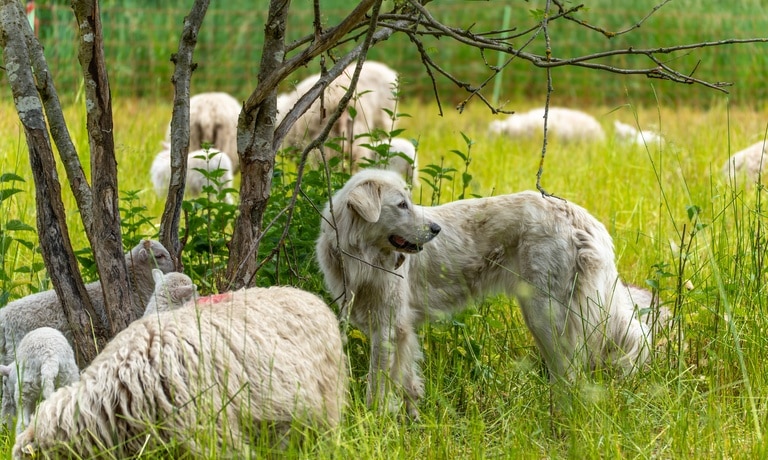
Choosing the ideal dog for your family is a big decision, especially if you’re exploring options for life on a farm. Whether you’re expanding your homestead or wondering if a working breed fits your lifestyle, learning about the differences between herding and livestock guardian dogs will guide your choice. These two types of dogs serve distinct purposes and bring unique traits to the table.
If it feels like it’s the right time for your family to purchase farmland and you want to bring a canine companion to the equation, knowing which dog suits your needs will be important. Below, we’ll break down their roles, traits, and how they fit into family life.
Purpose and Roles
Herding dogs want to move livestock. Breeds like border collies or Australian shepherds instinctively round up animals and guide them to where they need to go. They use precise maneuvers and quick reflexes to control herds.
Livestock guardian dogs, on the other hand, are protectors. Breeds such as Great Pyrenees or Anatolian shepherds instinctively stay with livestock and defend them from predators. Their role is more about safeguarding than guiding. Whether you need mobility or security on your farm largely determines which type is right for you.
Temperament and Behavior
Herding dogs tend to be energetic, highly intelligent, and eager to learn. They thrive on mental stimulation and daily tasks, making them an excellent fit for active families. However, they can have a strong herding instinct that may carry over into their interactions with kids or other pets.
Livestock guardians are calm, independent, and loyal. They focus less on activity and more on vigilance. While they are incredibly protective, their demeanor is often gentle and composed, making them great companions for families who value security and a lower-energy pet.
It’s worth noting that both types of working dog may bark. Livestock guardian dogs, in particular, may often bark at night as a way to ward off predators.
Physical Traits
Herding dogs are usually smaller and more agile, designed for speed and quick movements. Their sharp senses and intense focus allow them to react immediately to livestock behavior.
By contrast, livestock guardian dogs are larger and sturdier, built for endurance and strength. Their imposing size alone can deter predators, and their dense coats often help them adapt to harsh outdoor conditions.
Fit for Family Life
Herding dogs are wonderful for families who are highly active and ready to engage with their pets on a daily basis. Their intelligence and energy make them perfect for interactive games or training sessions, but their drive to herd may require early behavioral guidance.
Livestock guardians are suitable for families seeking a more laid-back companion who offers protection. These dogs tend to be independent thinkers. While bonded with loved ones, they won’t seek the constant engagement that many herding breeds need.
Picking the Perfect Partner
Selecting between herding and livestock guardian dogs should depend on your family’s lifestyle, activity level, and farm needs. While herders thrive on action, guardians shine when peace and safety are priorities. Recognizing the differences between herding and livestock guardian dogs ensures you’ll find the right fit to complement your life.
Whether you’re planning your next big move to the countryside or just exploring options now, understanding these differences can make your decision much easier.




